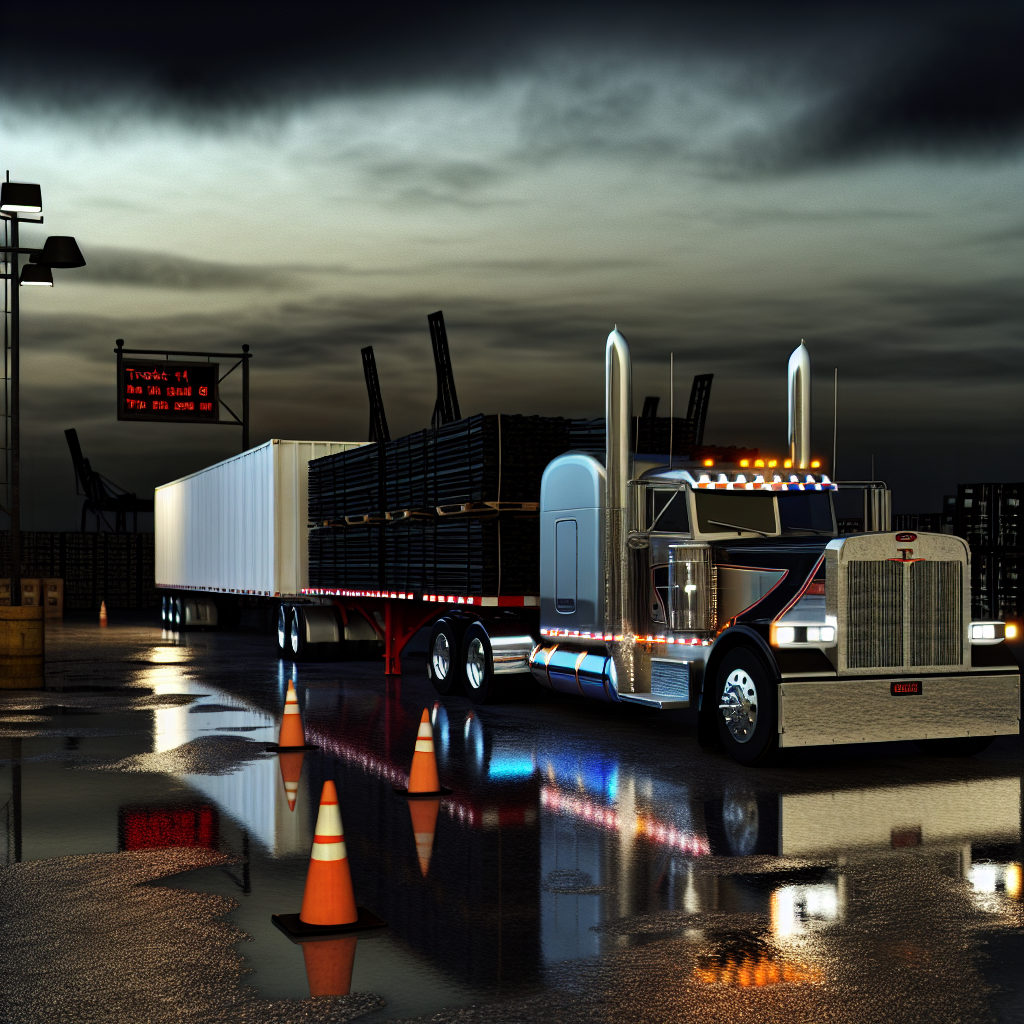Landstar’s latest quarter underscored how uneven this truckload cycle remains: platform/flatbed freight is doing more of the heavy lifting while dry van continues to lag. For the three months ended Sept. 27, the asset‑light carrier posted $1.21 billion in revenue, essentially flat year over year, with adjusted earnings per share of $1.22 after non‑cash impairment charges tied to a pending sale of its Mexican subsidiary, a transportation management system rationalization, and a prior tech investment. Within the mix, van revenue slipped to $583 million while unsided/platform revenue climbed to $386 million. Notably, Landstar also achieved its first sequential increase in BCO truck count since early 2022 — a small but symbolically important turn in capacity retention.
Management’s commentary framed the story: industrial and project freight kept the platform book resilient even as consumer‑oriented van lanes stayed soft. On the earnings call, executives emphasized that sustained strength in platform services and incremental improvement in BCO capacity are the levers they expect to carry into the next upcycle.
Fresh market data from outside the company helps explain the divergence. DAT figures highlighted by Trucking Dive show dry van contract rates have been stuck around $2.42 per mile (including fuel) through September — more than two years of stagnation that has favored shippers and squeezed carrier margins. That persistent pricing ceiling makes it harder for van‑heavy operators to translate modest volume blips into earnings momentum, whereas specialized/platform freight has enjoyed comparatively firmer pockets of demand and pricing.
Costs also ticked higher right as carriers head into peak season. The national average on‑highway diesel price jumped 9.8 cents to $3.718 per gallon for the week of Oct. 27, with the Midwest up a sharp 15.1 cents. For owner‑operators and BCO fleets paid on a linehaul‑plus‑fuel basis, that swing can squeeze cash flow unless surcharges and pricing keep pace — yet another reason disciplined network selection matters as Q4 unfolds.
On the demand side, macro signals remain mixed. U.S. consumer confidence slipped to a six‑month low in October, a negative read‑through for discretionary goods movement that disproportionately rides in dry vans. At the same time, tariff anxiety has some importers pulling forward spring orders, temporarily goosing port‑proximate volumes even as the broader retail outlook looks cautious. The net effect: near‑term tightness in a few coastal corridors, but no clear catalyst yet for a sustained van recovery.
What it means for trucking: Landstar’s print is a reminder to tilt toward industrial and project freight where possible — steel, energy components, utility and heavy machinery moves that travel on platform equipment — while pricing van lanes conservatively and guarding margins against fuel volatility. The company’s internal moves also bear watching: marketing its Mexican subsidiary for sale and consolidating onto a primary TMS should simplify the operating model and free up focus for the segments that are working. For brokers and carriers alike, the message is to align networks with the parts of the economy still putting freight on the floor, and to avoid overcommitting to consumer‑led lanes until contract pricing shows real lift.
Bottom line: Flatbed is doing the heavy lifting in a choppy market, and Landstar’s mix lets it lean into that strength. But with diesel edging higher and household sentiment slipping, the dry van slump isn’t out of the woods — and Q4 performance will hinge on staying close to industrial shippers, protecting yield, and keeping a tight rein on costs.
Sources: FreightWaves, Landstar System investor relations (GlobeNewswire), Seeking Alpha, Trucking Dive, U.S. Energy Information Administration, Reuters
This article was prepared exclusively for TruckStopInsider.com. Republishing is permitted only with proper credit and a link back to the original source.





